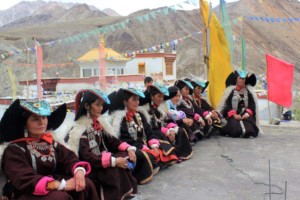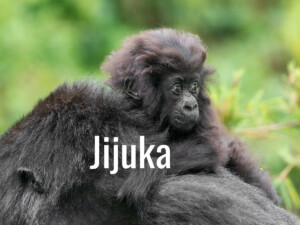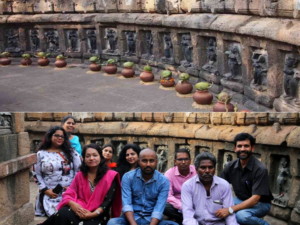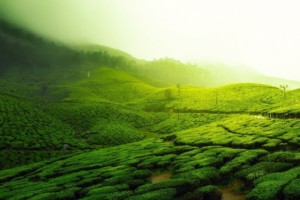How tourism in India can help protect olive ridley turtles
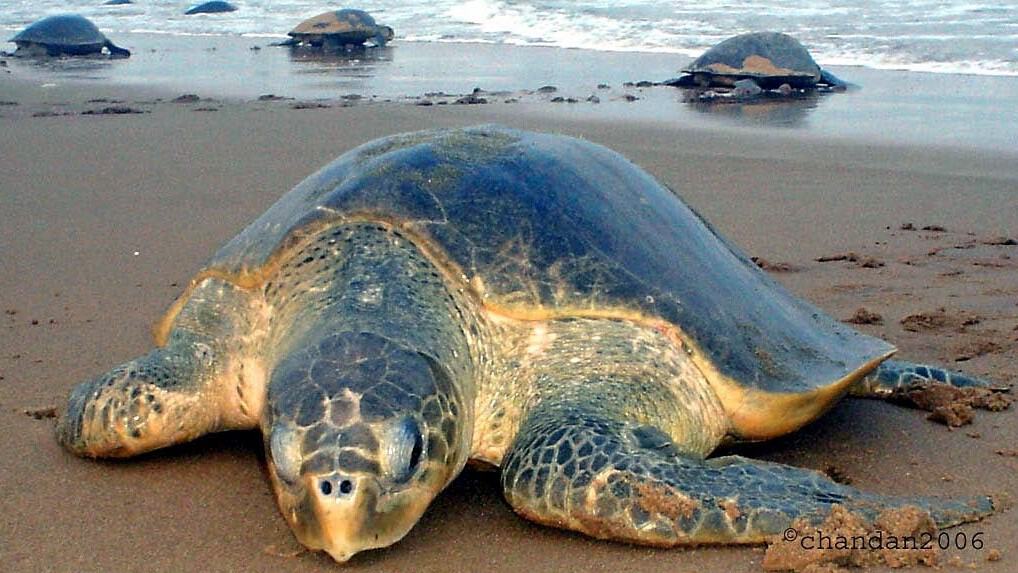
In her second “GT” Insights contribution, A Lajwanti Naidu shares what she has learned about olive ridley turtles and how the Andhra Pradesh Tourism Authority does and can contribute to their conservation.
Travel teaches more than books do. With this in mind, Andhra Pradesh Tourism Authority organised an educational tour to Diviseema and the Krishna Wildlife Sanctuary (KWS) — an emerging ecotourism destination — for the students of Acharya Nagarjuna University. Forest Department Ranger V Bhavani led the tour in which I also participated.
Diviseema is a small and fertile island located in the delta region where the Krishna River divides in two and meets the Bay of Bengal. Notable places on Diviseema include Kuchipudi, Movva, Ghantasala, Sangameswaram, Nagayalanka, Bhavadevarapalli, Koduru, Hamasaladeevi, Mopidevi, and Avanigadda.
The Krishna Wildlife Sanctuary (KWS) offers a safe place for the nesting of olive ridley turtles, which is one of several rare and vulnerable species for which KWS provides important habitat. Another is the fishing cat (Prionailurus viverrinus).
Among the important turtle nesting locations are the beaches of Baruva, Kalingapatnam, Kakinada, Machilipatnam, Hamsaladeevi and Nagayalanka. To help facilitate nesting, which takes place from January to May, the AP Forest Department and Tourism Authority have doubled the number of rookeries along the Krishna district coast from five in the last breeding season to 10. Where mass nesting has been observed at these sites, it is estimated that more than 88,500 eggs were proactively protected last season. Three new rookery locations have recently been identified at Lankavenidibba, Nachugunta, and Sorlagondi.
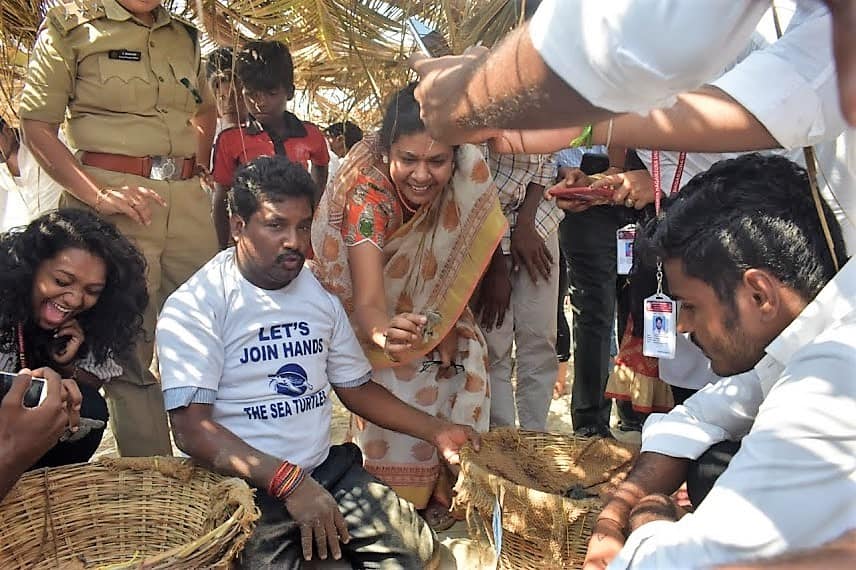
The following section focuses on the lifecycle and nesting behaviour of the olive ridley turtle. To skip to the tourism-related technical learnings from the tour, scroll down to “Learnings”.
About the olive ridley turtle
Inhabiting the warm tropical waters of the Pacific, Atlantic and Indian oceans, the olive ridley turtle (Lepidochelys olivacea) is the smallest and most abundant of all sea turtles. These turtles — along with their cousin the kemp’s ridley turtle (Lepidochelys kempii) — are best known for their unique mass nesting called arribada – a Spanish word meaning “arrival” — in which thousands of females arrive together on the same beach to lay eggs. Although found in relative abundance, the number of olive ridleys have been declining over the past few years. The species has been classified as “Vulnerable” by the IUCN Red List.
Growing to about two feet in length, and 50 kg in weight, the olive ridley gets its name from its olive-colored carapace, which is heart-shaped and rounded. Males and females grow to the same size, however, females have a slightly more rounded carapace as compared to the male. Olive ridleys feed mainly on jellyfish, shrimp, snails, crabs, molluscs and a variety of fish and their eggs. They spend their entire lives in the ocean and migrate thousands of kilometres between feeding and mating grounds over the course of a year.
Olive ridley turtles reach sexual maturity at approximately 15 years of age, which is early compared to other sea turtles. Olive ridleys use three different strategies to nest: arribadas, solitary nests, and mixed. Interestingly, females return to the very same beach from where they first hatched to lay their eggs.
During the arribada phenomenon, some 600,000 or more females emerge from the waters, over a period of five to seven days, to lay about 100 eggs each. They lay their eggs in conical nests about one and a half feet deep, which they laboriously dig with their hind flippers. Olive ridley tracks are 70 – 80 cm wide and have asymmetrical forelimb marks, and no tail drag marks.
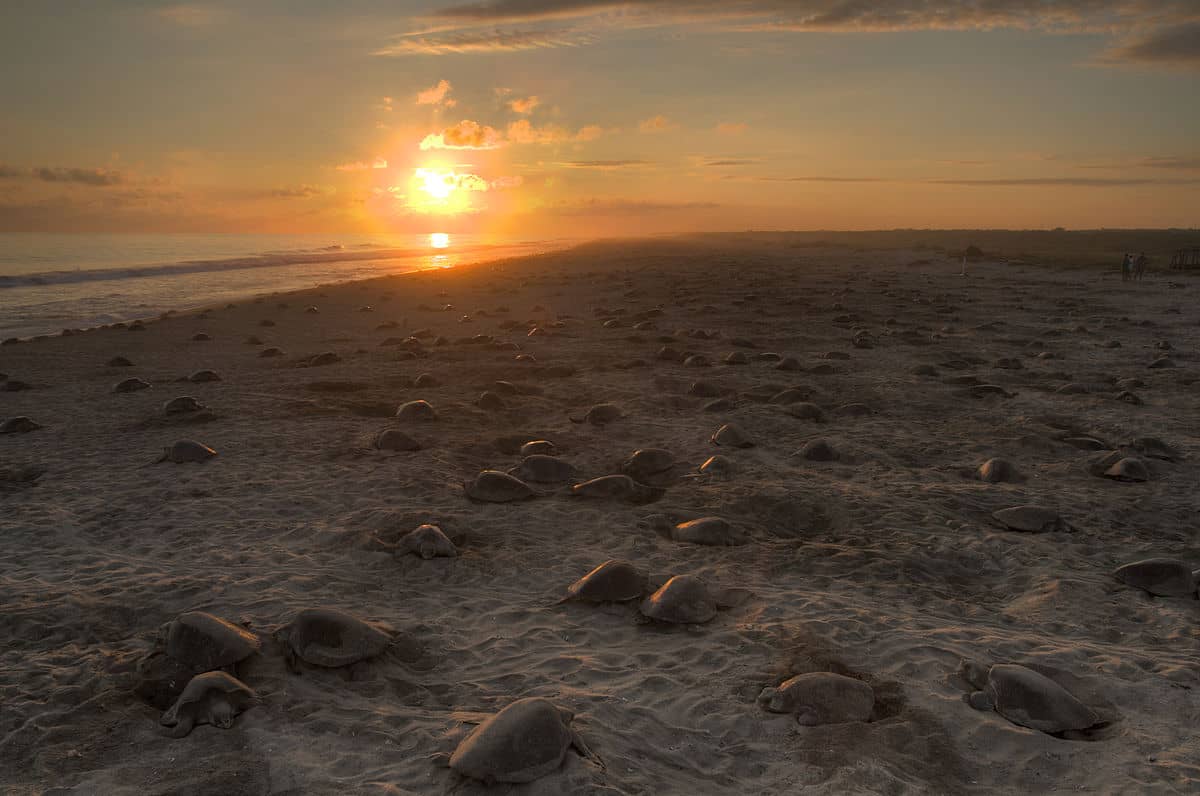
The female turtle emerges from the sea at night and ascends the beach, searching for a suitable nesting site — somewhere dark and quiet. Once at the chosen site, she begins to dig a body pit by using all four flippers. She removes the dry surface sand beneath her, which will later be used to cover the nest. Once she has created a body pit, she begins to dig an egg chamber using just her rear flippers, alternating between the right and left flipper to scoop out the damp sand. When she can reach no deeper, she pauses and begins contractions to lay her eggs, her rear flippers rising off the sand. Each contraction will produce between one and four eggs in quick succession.
Once her clutch is complete, she closes the nest using her rear flippers in a similar way to digging her egg chamber, just in reverse. She places sand on top of the chamber, until the eggs are completely covered. She gently pats the damp sand on top of her eggs, using the underside of her shell (plastron).
The camouflaging process now begins. Slowly moving forward, she throws the dry, surface sand behind her. This is an effort to conceal the location of her eggs from predators. She may move forward while she is doing this. When she is done, she heads down the beach and back to sea, never to return until the next time she lays. The eggs are left alone.
The temperature of the nest determines a hatchling’s gender. This is called temperature-dependent sex determination (TSD). Warmer temperatures produce mostly females, while cooler temperatures produce mostly males. There is a pivotal temperature that produces an even number of males and females. (The TSD ratio, common to reptiles, differs between species and nest locations.) The eggs and resulting olive ridley hatchlings are left to fend for themselves.
Because hatchlings are small and the egg chambers are deep, it is almost impossible for a single hatchling to escape from the chamber alone. As hatchlings break free from their shell inside the egg chamber, they stimulate other hatchlings to emerge from their eggs too. Once most hatchlings have emerged from their shells, they climb on top of the discarded eggshells to propel themselves to the top of the chamber. The hatchlings near the top of the egg chamber scratch down sand from above and around them.
The coast of Orissa in India is the largest mass nesting site for olive ridleys, followed by the coasts of Mexico and Costa Rica. After about 45 – 65 days, the eggs begin to hatch, and beaches are quickly swamped with crawling olive ridley turtle babies, making their first and most hazardous trek towards the vast ocean. During this trek they are exposed to predators like jackals, birds, hyenas, fiddler crabs, and feral dogs lurking around, waiting to feed on them. Other dangers await them beneath the waves.
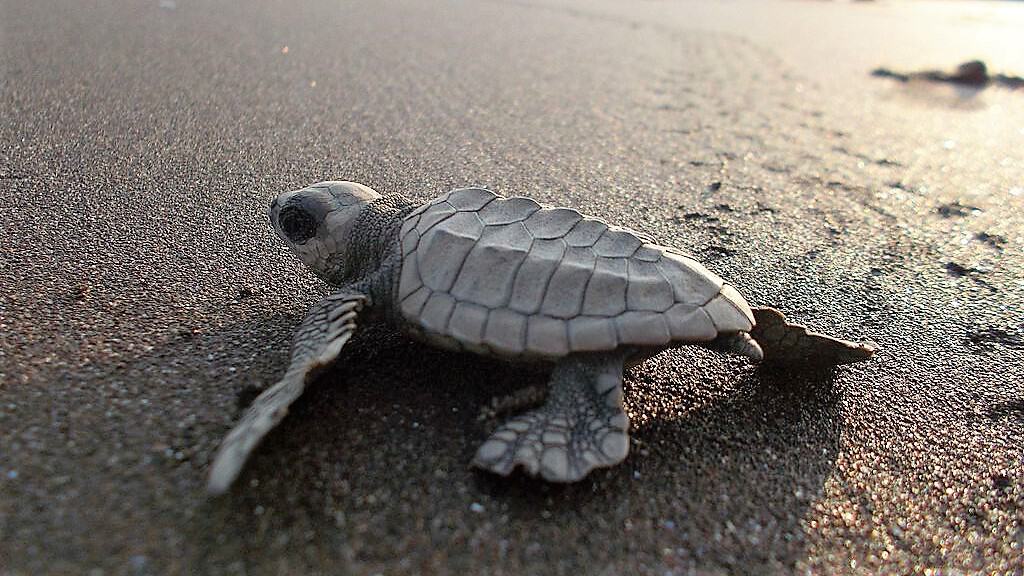
Learnings
The students on tour were educated on the role of local communities on Diviseema. We interacted with Yanadi tribespeople trained in the conservation of olive ridley turtles. They demonstrated how they identify and collect eggs and secure safer nesting sites for them.
Sponsored by the Andhra Pradesh government to do this important conservation work — which includes keeping open the rookeries for off-season visits by students, tourists, and local stakeholders — it is a tough enough task for the Yanadi to simply survive! Telecommunications on Diviseema are unavailable; poisonous snakes inhabit the island; the only means of transportation is by boat; and medical facilities are out of reach in case of emergencies. All necessities, including water, must be brought to Diviseema. Furthermore it is very hot during summer and highly unpredictable during the rainy season.
My tourism-related technical learnings included:
- The boats used for transportation must follow safety protocols and be registered with local police to ensure safety for tourists.
- Promotion is needed to increase tourism, through which revenue can be generated to local areas.
- To better preserve the pristine environment, local authorities should develop a permit system to regulate visits by tourists, students, and researchers.
- Home stays – rather than new construction – should be encouraged to provide accommodation to visitors that deliver economic benefits to host communities.
- Similarly, mobile canteens – rather than permanent buildings – are the best option to provide food and beverages for tourists when they are not with their hosts.
As Margaret Mead said: “Never doubt that a small group of thoughtful, committed citizens can change the world; indeed, it is the only thing that ever has.”
Andhra Pradesh Tourism’s nascent involvement in the conservation and protection of olive ridley turtles is but a first step that can go a long way.
Featured image: Olive ridley turtles by Chandan Singh (CC BY 2.0) via Flickr.
About the author

Addala Lajwanti Naidu is an academic and prolific writer on responsible tourism, including issues related to skills development, economic impact, climate change, conservation of species, poverty alleviation, the employment opportunities of the visually-challenged, sustaining local communities with art and culture, conservation of the arts, and tourism industry integration. With an acumen for teaching and skills development, and a proponent of the idea that tourism is a tool for poverty alleviation, A Lajwanti Naidu is presently associated with Andhra Pradesh Tourism Authority as Assistant Director- Capacity Building.


